[orc]As we get closer to the data collection exercise for the Census 2021, here is a look at the evolution of the Census exercise.
On 23 September 2019, Union Home Minister Amit Shah stated that the 2021 census would be conducted digitally replacing the traditional pen and paper. This will be the first Census of India that will be conducted digitally.
But what is Census? Why is it conducted? How has the Census exercise evolved over the years? In this story, we explain some of these.
Census 2021 would be the 16th decennial census being conducted
The Decennial population census is conducted every 10 years. The population census activity includes the process of collecting, compiling, analyzing and disseminating the data collected. The data collected during the census exercise is of demographic, socio-cultural and economic in nature. This information is critical for planning, analysis, policy formulation and other aspects where data plays a crucial role. The census data forms a very important baseline for tracking progress, planning relevant policy interventions.
The first census activity in India was initiated in 1865 for the 1872 census by the then British Government. Post-Independence, the Census Act, 1948 was passed which lays the guidelines and procedures to conduct the census. The first census for Post-Independent India was in the year 1951.
The conduct and analysis of the Census in India is done by ‘Office of Registrar General and Census Commissioner’ under the aegis of Ministry of Home Affairs. The Ministry of Home Affairs has released a notification in March 2019 in regard to the conduct of 2021 Census. This is in lines with Section 3 of the Census Act 1948.

As per the notification released by the government, the next census of India would be carried out with 01 March 2021 as the reference date. In the case of snow bound states of Jammu & Kashmir, Himachal Pradesh and Uttarakhand, the reference date would be 01 October 2020.
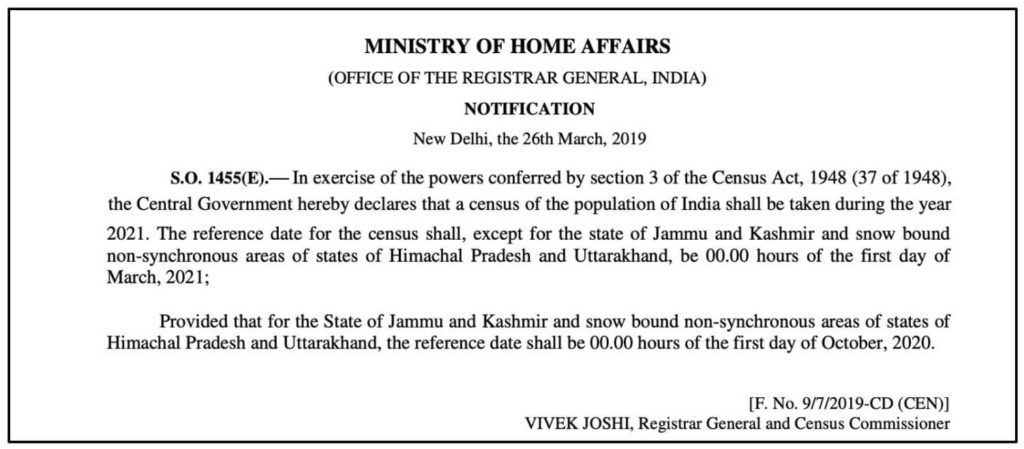
The Census Questionnaire evolved in view of changing requirements
The population census activity holds the unique distinction of being conducted every 10 years without any interruption. However, the type of information being collected in the census has changed over a period of time. The Census questionnaire is an important tool which the enumerators use to collect the information. The questionnaire used for 1872 census consisted of 17 questions.

One of the challenges during the first three censuses (1872, 1881, 1891), was the lack of designated house numbers, which was overcome by the time of 1901 census, making it more systematic to collect the data.
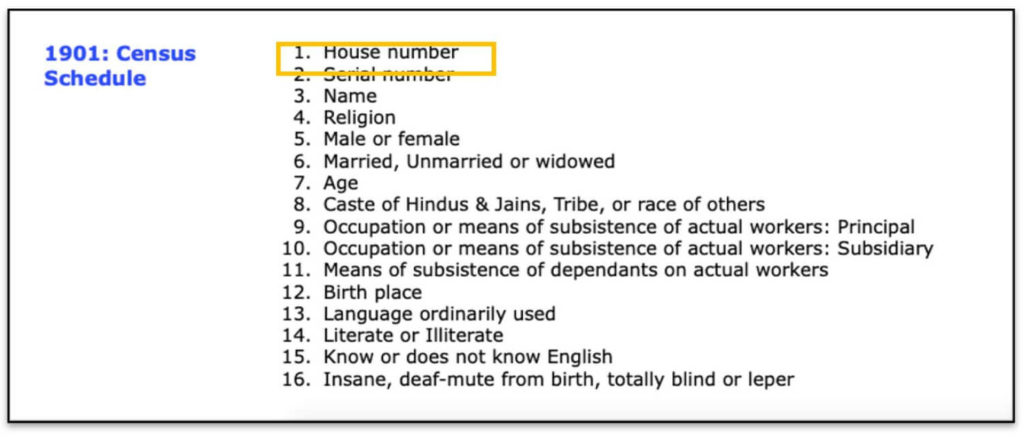
The inclusion of ‘Caste’ was a unique to India compared to the census activity conducted in the other British colonies. The first census conducted post-independence (the 1951 Census) had 13 questions for collection of information including: Name, relationship, birthplace, sex, age, economic status, means of livelihood, religion, mother tongue, literacy etc. In context of partition, ‘Displaced persons’ was an unique addition limited to this census.
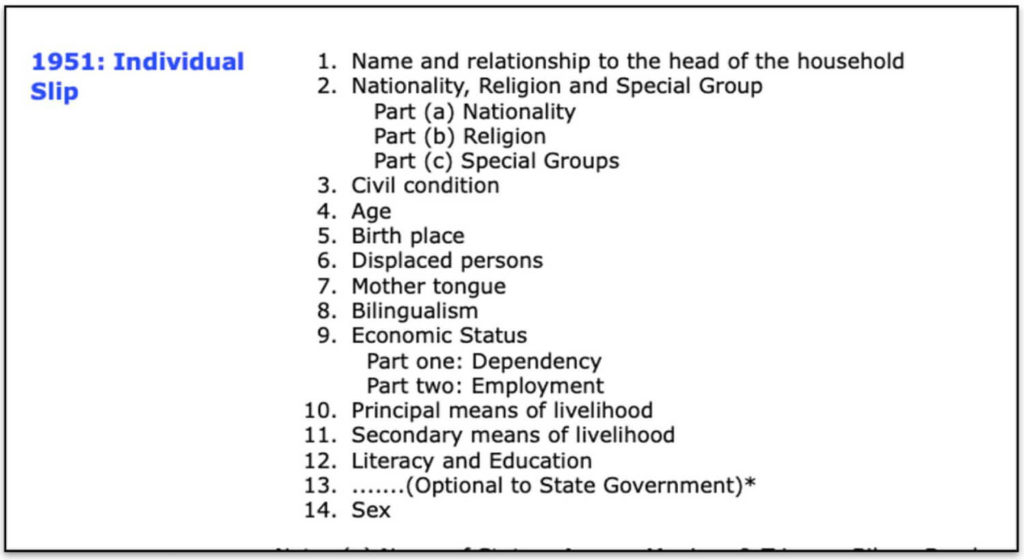
In the next census i.e. 1961, two separate schedules i.e. ‘Household schedule’ and ‘Individual Slip’ were used instead of only ‘Individual slips’ used in the previous census. With this census, the question regarding place of birth was further expanded to include – ‘Rural’ or ‘Urban’. The 1961 census also made provision for explicit enumeration of ‘SC/ST’ category.
The 1971 census included 17 questions, with new inclusions being:
- Information about fertility for married women.
- ‘last residence’ was included to compile information about migration.
- More questions were included to collate information on economic status.
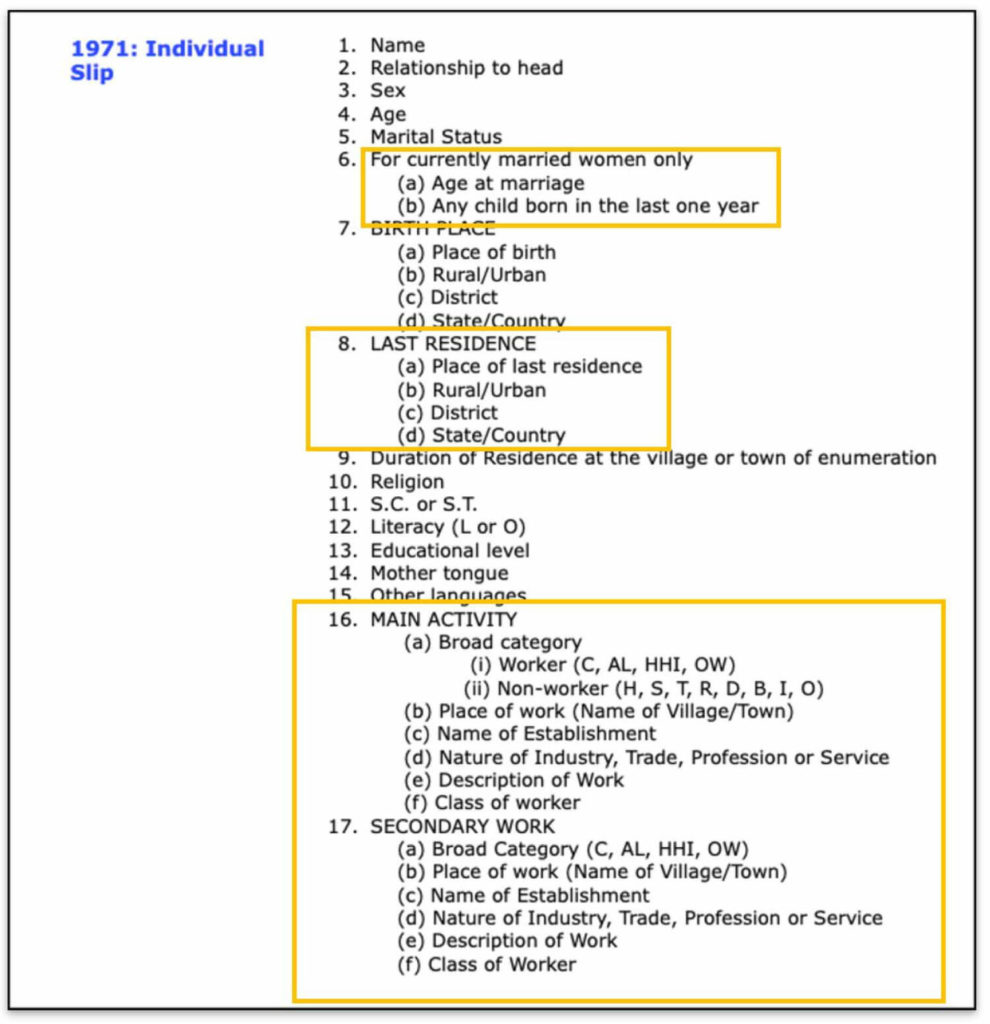
In 1981 census, the household schedule also included collection of information with respect to amenities available in a household – drinking water, electricity, toilet facility etc. along with information such as the nature of housing i.e. the construction materials used for wall, roof, floor etc.
The 2001 census marked a shift in technology with the introduction of Intelligent Character Reading (ICR), which enabled high speed scanning of the manual written schedules and converting the information into digitized form. The questionnaire schedule comprised of 23 questions and included new questions like:
- Age at marriage for males
- Type of education
- Total and partial disability
- Sex wise information of children born in last one year
- Area under cultivation for households engaged in cultivation
For the first time, taking the signature or thumb impression of the respondent was included in the census.
The number of questions increased in the 2011 census, which had 29 questions. Some of the highlights from 2011 census include:
- ‘Other’ included in Sex column.
- Sub categorization of SC/ST included
- The nature of disability has been included. A separate code for ‘special school for disabled’ was included.
- Name of Village and town included along with district, state and country with respect to migration data.
2011 census also attempted at gathering information on castes. The earlier census had provision only for the inclusion of SC/ST as part of information gathering. A socio-economic Caste Census was also conducted in 2011. This enumeration was based on the respondents declaring their own caste which has led to the creation of thousands of caste/sub caste categories. In view of this, the government is considering having a list of OBCs notified by each state to be used for enumeration for 2021 census.
The number of questions has increased since the time of the first census post-independence to include new information as part of the census activity. From 14 questions in 1951, the number has increased to 29 in the 2011 census.
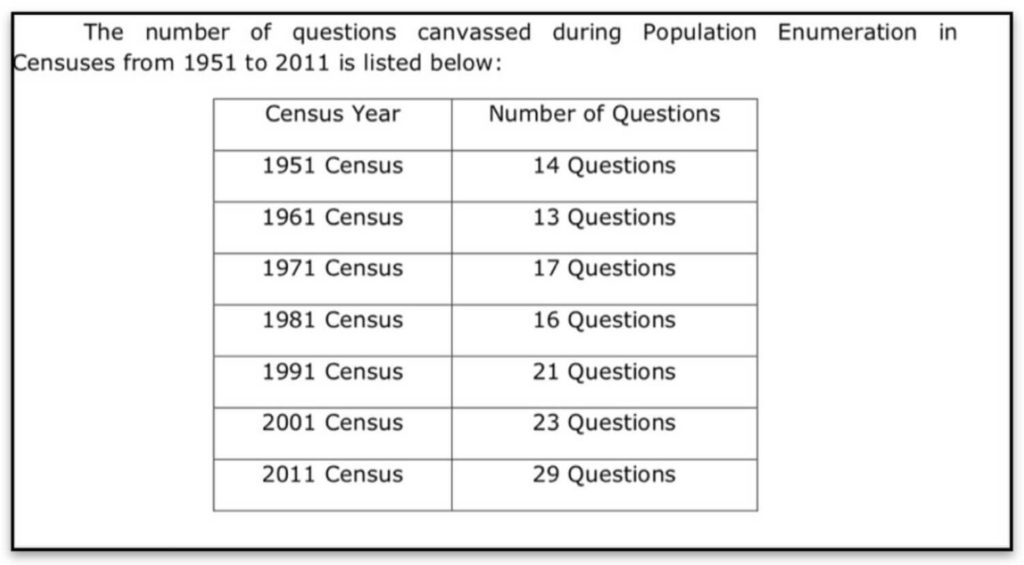
2021 Census – A step towards Digitization
As stated earlier, the 2021 census would be the first census in India where the enumeration would be done digitally. A mobile application would be used by the enumerators to collect the data. As per Registrar General of India , Vivek Joshi , collecting the information digitally would help in having the results almost immediately, unlike earlier where it used to take multiple years for the data to be analyzed and the reports published.
The Office of Registrar General and Census Commissioner of India has multiple divisions which are involved in the whole census exercise.
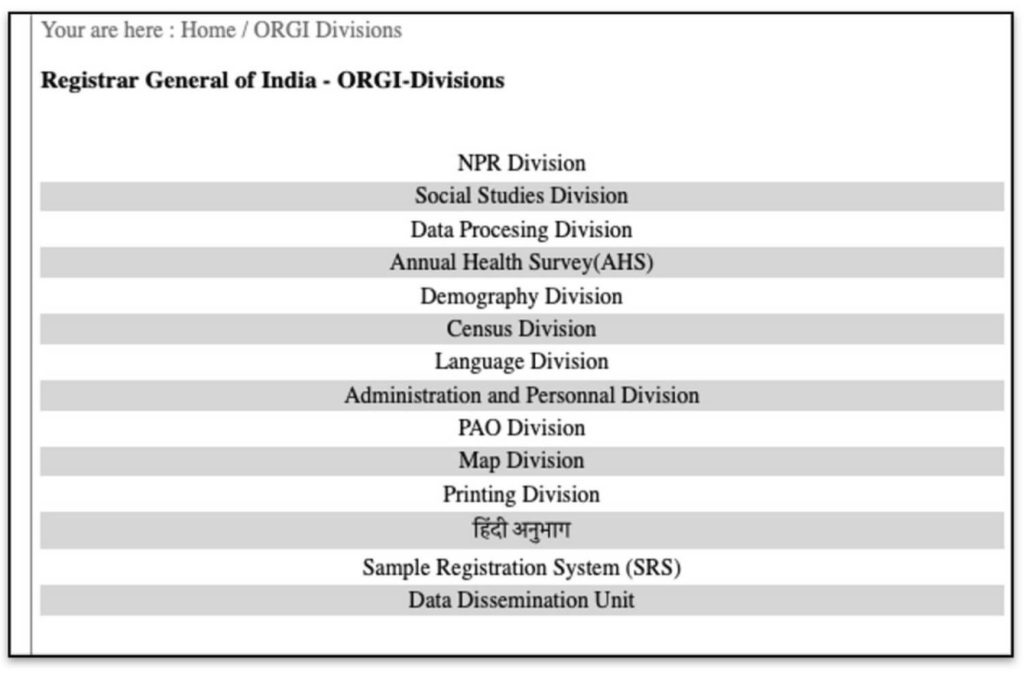
The comprehensive questionnaire to be used for the 2021 census isn’t available yet. However, this is one step amongst a broad spectrum of activities which takes place for Census 2021.
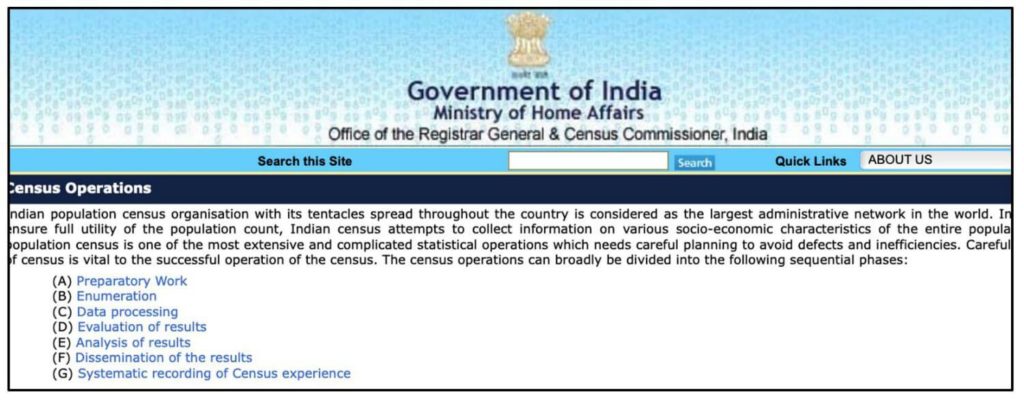
Approximately 33 lakh teachers would take on the responsibility of enumerators. The mobile application would be installed on the phones of the enumerators.
The Census exercise would be conducted in two rounds as noted below.
- The first round will be conducted in 2020, wherein the enumerators would go house-house to record amenities in each household. This is referred to as household Schedule
- The second round – ‘Head count’ would be carried out in early 2021, approximately 6 months after the first round.
As highlighted earlier, Jammu & Kashmir, Himachal Pradesh and Uttarakhand are exceptions for whom the enumeration would be conducted earlier with reference date as 01 October 2020. A revision round of enumeration would be done in March, for those who might have initially missed out.
A pre-test Census is carried out between 12 August 2019 and 30 September 2019 with a sample size of 50 lakh respondents across the states and UTs. A questionnaire with 28 questions has been developed for the pre-test.
The move towards digital mode of collecting the data is a step forward to speed-up the process of analysis and release of reports, which would make the census data more relevant. However, security of the data being collected (especially with the application being installed on the mobile devices of enumerators) and adequate backup mechanism for the data has to be looked into.



2 Comments
Pingback: Explainer: How did the Census evolve over the years? - Fact Checking Tools | Factbase.us
Pingback: Explainer: What happens before, during & after the Census exercise? - Fact Checking Tools | Factbase.us